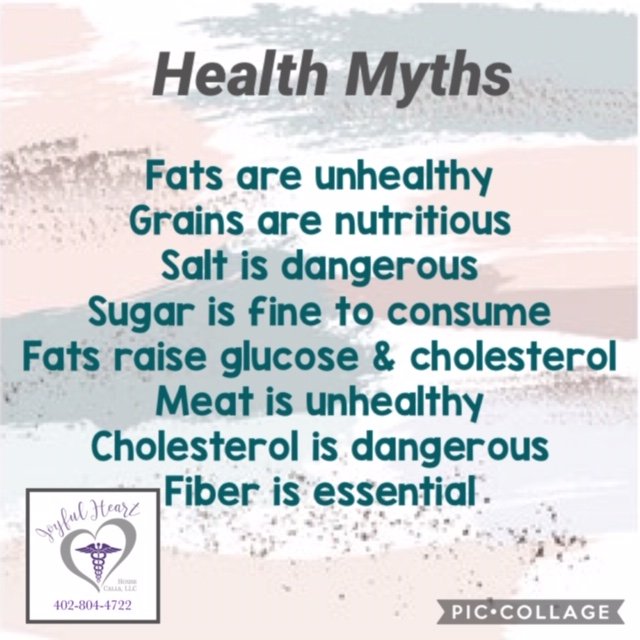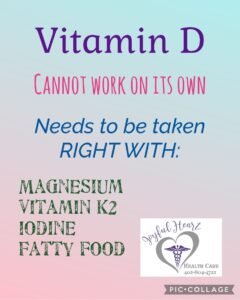Dealing with metabolic dysfunction can seem overwhelming at first glance, or even after years of the struggle. Information on the web can be confusing and downright contradictory. Mainstream medicine offers little support and education regarding steps to take to improve health, and many functional/holistic professionals have their own “personal perspective” often founded in a variety of potions, supplements, and treatments – from which they all profit. It can be quite daunting to begin researching best practices that will actually BENEFIT you and your physical health. This article is written to help explain and clarify some of the basic concepts of healing your metabolic dysfunction. Let’s begin by looking at a few definitions and clarifications.
Just what is metabolic dysfunction? Metabolic dysfunction is a very vague and generic phrase that serves as a type of “umbrella term” that includes a multitude of actual health conditions and diagnoses, including hypothyroidism, hyperthyroidism, PCOS, insulin resistance, hypertension, estrogen dominance, diabetes, hypertriglyceridemia, obesity, and even heart attack, stroke and adrenal fatigue. Thus, it’s easy to see how/why confusion runs rampant when metabolic dysfunction is discussed. Any symptom or condition that impacts energy metabolism or use falls under the “metabolic dysfunction” category.

One of the most common dysfunctions I see is weight gain. Weight gain is a symptom of almost all metabolic diseases and one of the most difficult to battle. The struggle to lose weight can be a bit cumbersome and defeating because mainstream medicine continues to say that weight gain is simply a problem of poor willpower and inadequate self-control – saying that “if you just eat less and move more, you’ll lose it.” But that simply is NOT true at all, and we have more data and research nowadays to support that concept – why don’t mainstream professionals keep up to date on the science? Time. While unacceptable, most doctors & nurses have very limited time during their workday to scour new research; they work 12-20 hours a day, often charting and following up labs, phone calls, and messages, late into the night and then, they start all over at 6 am the next morning. It’s a vicious cycle run and micro-managed by accountants and executives trying to balance the bottom line and generate a paycheck for employees and a profit for shareholders.
But…. We’ve drifted astray… let’s get back to the weight gain. Weight gain is NOT the root cause of metabolic dysfunction; rather, weight gain is a SYMPTOM of metabolic dysfunction. When the internal chemistry of metabolism gets out of balance, weight gain is almost always the result. Take for example: hypertension – elevated blood pressure is almost always an early diagnosis in people who are overweight. With hypothyroidism, weight gain occurs because of the energy imbalance created by a lack of adequate thyroid hormone that is supposed to keep metabolism properly balanced. Or type 2 diabetes – elevated glucose levels generally take years to develop, all while the patient is steadily and slowly gaining weight. What about PCOS, polycystic ovary syndrome – often diagnosed in adolescence or young adulthood, this metabolic dysfunction manifests in reproductive hormone chemical imbalances, but estrogen dominance is NOT the root cause of the imbalance. Insulin resistance is the main driver of metabolic dysfunction in the majority of the population; it is pretty simple to search for statistics in any country regarding the numbers of people who are overweight or have pre-diabetes. In America, it’s estimated that 2/3 of us are overweight – interpreted, that means that most Americans suffer with some type of metabolic dysfunction. Mainstream medicine needs to remove the blinders of history, habit, and outdated guidelines.
So, if metabolic dysfunction encompasses such a vast array of medical conditions and a multitude of chemical actions, how in the world does one battle it? Literally, one day at a time. It’s important to fully grasp a couple of essential concepts: 1) Healing these chemical & hormonal imbalances takes time, and 2) It took the body several decades to become this metabolically unhealthy; give yourself GRACE and patience. When the struggle drags you down, pull yourself back together and hang on! Some days may be rough, but the healthier YOU will be more and more grateful. Be patient. Take a deep breath. Go for a leisurely walk. Try meditation, Yoga, or Thai Chi. Do something to benefit your mental AND physical health.
Now that we have a foundation on which to build a happier and healthier YOU, let’s lay out the plan for the next few months. Start by identifying the most inflammatory and unhealthy foods you consume. Read labels and reduce/avoid any foods that contain grains; grains include wheat (NOT just gluten), rice, corn, barley, oats, rye, and quinoa. Not only are grains VERY high in carbohydrate content, but they have also been associated with elevated inflammation, swelling, pain, and fatigue. Avoid all processed oils, trans-fats, and vegetable oils, including corn oil, canola, soybean, rapeseed, hydrogenated oils/fats, margarine, vegetable, and peanut oils; soy is NOT healthy, and it’s VERY important to find and avoid it because it’s in EVERYTHING processed. Use real butter, avocado oil, coconut oil, bacon grease/lard, or beef tallow for stovetop cooking. Olive oil is fine for cold use, but when it’s heated to high heat, PUFAs are generated and polyunsaturated fatty acids contribute to inflammation. Beans and legumes are also associated with inflammation, and that includes pinto, red, kidney, lima, northern beans, dry peas, and even peanuts. Also pay attention to spices, condiments, and dressings as these are often thought of as “less dangerous” but may contain wheat, soy, sugars, and other inflammatory ingredients.

While there are many definitions of low carb eating, most of my patients find that they get better glucose levels, have more energy, and lose more weight when carb intake is minimal. The definition of low carb can mean 100 grams of carb per day even though that is still a lot of carbs. However, consider that mainstream nutrition advice typically recommends 45 g of carbs per meal and 15 grams of carbs twice a day as snacks, for a total MINIMUM carb intake of 165 grams. You can determine for yourself your carb intake goals, but always re-evaluate and re-assess any time you hit a wall, stall, or plateau with glucose readings or weight. The most successful patients often consume less than 30 grams of carbs per day – yes – you read that correctly – 30 grams of carbs per day. Carbohydrates have never been deemed “essential” to life or health because the body is really adept at obtaining glucose from many other foods we consume. The Institute of Medicine, a highly recognized organization that works OUTSIDE the government to provide unbiased and authoritative advice to the public, stated in 2015, “the lower limit of dietary carbohydrate compatible with life apparently is ZERO, provided that adequate amounts of protein and fat are consumed.” Say what? Can you say that again? Carbs are not required for sustaining life when adequate protein and fat are eaten. Simple. Straightforward. Fact. Hard to accept. Hard to believe. Difficult to wrap your head around, usually because our daily meals center around multiple carbohydrate-laden foods. Imagine my Mississippi Sunday dinner when I was growing up: fried chicken dipped in THICK breading, mashed potatoes AND wheat-based gravy, with corn, peas, and a big ol’ pan of homemade cornbread. Basically, that entire meal, except the meat of the chicken, converts to glucose, WHILE you’re still chewing it.

Then what do people eat if cutting all those grains out? Real food. Real meat – not breaded – including beef, pork, chicken, fish, and seafood. The “evidence” that suggests meat is unhealthy has serious flaws, including research bias, funding from BigFood manufacturers, and preconceived notions; research bias occurs when the funding agency or organization WANTS data to say one thing, and so data may be purposely skewed or even disregarded by the researchers, who feel an OBLIGATION to “support” the company paying them. Real food includes many low carb vegetables; to find out how many grams of carbs are IN any food, just use an app like Cronometer, My Fitness Pal, LoseIt or any of the other popular ones available. Note that there are YouTube videos to show you how to use them; one word of caution: when setting your macro goals, be sure to choose TOTAL carbs and set your OWN macro goals. Do not use any automatic setting that allows the app to calculate your macros for you; set your own goals based on your health needs or on your consult with me.

A tip you will also find a bit odd, concerns the amount of salt we need to consume; mainstream medicine’s stance has been that low salt intake is helpful for keeping blood pressure low and healthy. However, mainstream medicine has forgotten about 2 major facts of basic physiology: 1) salt is considered an essential nutrient, required for life & health, and 2) salt is essential for the sodium-potassium pump that allows for muscle contraction – especially the heart muscle contractions that occur round the clock and without resting/stopping. While mainstream medicine recommends a maximum of 2 grams or 2000 mg of salt per day, the “scientific data” on which it’s based is weak and flimsy. In 1988, The Intersalt Study attempted to resolve contradictions among various studies regarding salt’s influence on blood pressure, but failed completely to draw ANY associations at all between salt and blood pressure. It’s estimated that only about 15-20% of the population actually exhibit any “salt sensitivity” at all – meaning, there is some elevated blood pressure or associated symptoms when excess salt is consumed. For hundreds of years, the intake of salt associated with the lowest disease risk has averaged 1.5 – 3 teaspoons. In addition, lower sodium intake is associated with poorer outcomes in a variety of conditions, including diabetes, insulin resistance, and hyponatremia in athletes and the elderly; the elderly with low salt intake are at high risk of dizziness, falls, cognitive impairment, and broken bones.

Finally, protein intake is essential to health, whereas carbohydrates are not. The body was designed to use a specific amount of protein for basic cellular processes and cell replication. It is extremely important to consume a basic amount of protein daily. Optimal sources of protein include meat – any type of meat can serve as good proteins, but keep in mind that red meat, beef and wild game, are also ideal sources of vitamin B12 and iron –both essential for health and the prevention of anemia. While we can supplement B12, or even consume “protein shakes”, the body much prefers to obtain nutrients via normal digestive processes from real food. Also note, many experts report that vegetable proteins nutrients are less bioavailable and thus more difficult to digest and absorb than meat proteins. Our ancestors, hundreds of thousands of years ago, lived a mostly carnivore diet, only able to enjoy plant foods seasonally. So keep these tips in mind as you choose your long-term eating plans.

A couple of other tips regarding metabolic dysfunction: many supplements are suggested by different experts, and the choices are massive today. But honestly, the majority of us only need Vit D (& its cofactors) and the B complex vitamins – NOT a lone B12. B12 needs the other B vitamins to be absorbed and used by cells and tissues optimally. Keep in mind that B12 is an ingredient of energy drinks for a REASON, so ALWAYS take B vitamins early in your day- never in the evening. If you have chronic conditions or take medicines, many of them can contribute to other supplement needs, but these are pretty individual. To determine YOUR specific needs, you can contact me at joyfulheart4722@gmail.com to schedule a personalized consult.

NOTICE: This content is for informational and educational purposes only. It is not intended to provide medical advice or to take the place of medical advice or treatment from a personal health care professional. All viewers of this content are advised to consult their own qualified health professionals regarding specific health questions. Neither KetoNurses, Joyful Heart House Calls, or the publisher of this content takes responsibility for possible health consequences of any person or persons reading or following the information in this educational content. All viewers of this content, especially those taking prescription or over-the-counter medications, should consult their medical providers before beginning any nutrition, supplement or lifestyle program.




